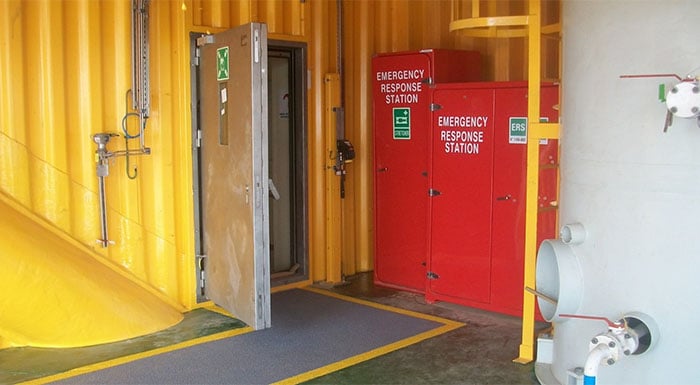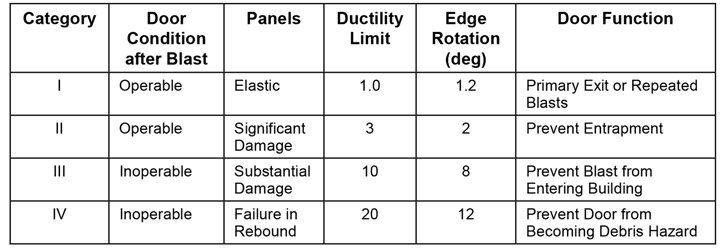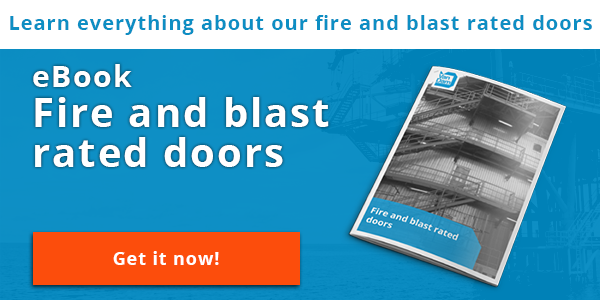
When working with potentially dangerous fuels, a safe environment is necessary. You want to ensure the safety of your personnel and equipment. Therefore, the use of the right blast protective products are needed. In this blog we will discuss the guidelines for acceptance blast door operation.
Blast doors
A blast door has a specific purpose, that need to be specified during the design stage of the facility. With this purpose, there are several questions you need to ask yourself. For example: After a blast event, should the door still remain operational?
Strict standards
The occurrence of accidental fire outbreaks and explosions on onshore and offshore oil and gas facilities are rare. However, the consequences can cause major damage to the facility, but also to the environment.
To ensure the safety of personnel, equipment and the public safety there are given standards. A number of incidents has made these standards more strict to minimize the risks of big damages and maximize the safety. There are also guidelines available for acceptance blast door operation.
Guidelines for acceptance blast door operation
The ASCE has specified guidelines for the design of blast resistant buildings in petrochemical facilities. These guidelines divide the blast door operation into four categories.
Category 1 – The door still has to be operational after a blast event. This is for example necessary when there is a risk of another blast and the door is a primary exit of the facility.
The blast door has a restricted elastic range, the ductility ration should be 1.0 or less. The door edge rotation may not exceed 1.2 degrees.
Category 2 – With this category the blast door still has to be operational after a blast event, but can have significant damage. These blast doors has to be operational to prevent entrapment of personnel. The ductility ratio is between 2 and 3 for this type of doors. The recommended edge rotation is equal to or less than 2.0 degrees.
Category 3 – The blast doors in this category does not have to be operational after a blast event. No major structural failure of the panel, restraining hardware system and frame is permitted. For this category the ductility ratio is in the range of 5 and 10, the edge rotation has a maximum of 8 degrees.
Category 4 – Finally there is the fourth category. In this category the door also not have to be operational after a blast event and outward rebound force and resulting hardware failure is acceptable.

With these categories, it is easier to choose the right blast door for each compartment of the facility. Download our eBook for more information about blast doors and the specifications they comply to.






